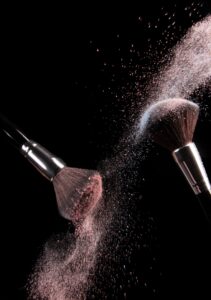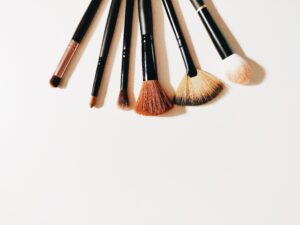Clean Brushes, Clear Skin

Makeup brushes and tools are an essential part of our beauty routine, but they can also be a breeding ground for bacteria if not cleaned regularly. Cleaning your makeup brushes and tools not only extends their lifespan but also keeps your skin healthy and free from breakouts. In this ultimate guide, we will provide you with the best tips and tricks for cleaning your makeup brushes and tools to keep them in pristine condition.
Why Cleaning Your Makeup Brushes and Tools is Important
Cleaning your makeup brushes and tools is essential to maintain their quality and effectiveness. Makeup brushes and tools accumulate dirt, oil, and bacteria over time, which can lead to clogged pores, breakouts, and skin irritation. Regular cleaning removes all the dirt and bacteria from your brushes, ensuring that your skin stays healthy and free from infections.
How Often Should You Clean Your Makeup Brushes and Tools?
The frequency of cleaning your makeup brushes and tools depends on how often you use them. Ideally, you should clean your brushes after every use to prevent the buildup of bacteria and dirt. However, if you don’t use them frequently, you can clean them every two to three weeks. In addition, you should also clean your tools like eyelash curlers and tweezers at least once a week to prevent infections.
How to Clean Your Makeup Brushes and Tools
Cleaning your makeup brushes and tools is easy, and you only need a few simple tools. Here’s how to do it:
Step 1: Rinse the brush or tool under lukewarm water to remove any excess makeup or debris.
Step 2: Apply a small amount of gentle cleanser or shampoo to the bristles or tool and lather it up.
Step 3: Rinse the brush or tool under running water until the water runs clear.
Step 4: Gently squeeze out any excess water and reshape the bristles.
Step 5: Lay the brush or tool flat on a towel to air dry.
Skincare Tips for Cleaning Your Makeup Brushes and Tools
In addition to cleaning your brushes and tools, there are a few skincare tips you should follow to keep your skin healthy and glowing.
Tip 1
Use a gentle cleanser or shampoo to clean your brushes and tools. Avoid harsh soaps and detergents as they can damage the bristles and cause them to shed.
Tip 2
Always use lukewarm water to rinse your brushes and tools. Hot water can damage the bristles and cause them to lose their shape.
Tip 3
Never dry your brushes or tools with a hairdryer as the heat can damage the bristles and cause them to fall out.
Makeup Tips for Cleaning Your Makeup Brushes and Tools
Cleaning your makeup brushes and tools can also help you achieve flawless makeup application. Here are some makeup tips to keep in mind when cleaning your brushes and tools.
Tip 1
Use a brush cleaner or sanitizing spray to clean your brushes and tools in between uses. This will help to keep them clean and bacteria-free.
Tip 2
Use a separate brush for each product to prevent cross-contamination. For example, use one brush for your powder products and another for your cream products.
Tip 3
Always store your brushes and tools in a clean and dry place. Avoid storing them in damp areas like your bathroom as this can cause bacteria to grow.

In conclusion, cleaning your makeup brushes and tools is essential to maintain their quality and effectiveness. Regular cleaning can also prevent breakouts and skin irritation. Follow the tips outlined in this ultimate guide to keep your brushes and tools in pristine condition, and your skin healthy and glowing. Remember, a little effort goes a long way when it comes to your beauty routine!

